Delivery App Development: How To Build One? Top Ideas, Features, and Cost Range
In 2023, the online food delivery market has reached a whopping $0.91 trillion and is expected to grow by 20.6% in 2024.
For a startup founder navigating this dynamic market, understanding the complexities and opportunities that lie within the realm of delivery app development is crucial.
Whether it’s food, groceries, or other commodities, the demand for efficient and user-friendly delivery services is soaring globally.
This article aims to guide you through the intricacies of delivery app development. From understanding what delivery app development entails, and exploring innovative ideas and types, to dissecting the cost factors involved, we’ve got you covered. As you embark on this venture, keep in mind the evolving trends, technological advancements, and consumer expectations shaping this industry.
Let’s dive in and explore how you can position your startup at the forefront of the delivery app revolution.
What is delivery app development?
When you think about modern convenience, delivery apps likely come to mind. They’ve become an integral part of our lives, offering everything from food and groceries to parcels and personal items right to our doorsteps. But what exactly goes into the development of these apps?
Delivery app development is the process of designing, creating, and maintaining applications that streamline ordering, tracking, and receiving products and services.
The development process encompasses several stages, including ideation, planning, design, coding, testing, and deployment. Each step is crucial to ensure a seamless, user-friendly, and efficient app experience.
# Why invest in delivery app development?
Are you wondering why investing in delivery app development is more than just following a trend? Let’s explore the compelling reasons that make this investment worthwhile for your business:
- Boost customer engagement: Delivery apps provide a unified platform for customers to engage with your business. They offer convenience, speed, and an array of choices, all from the comfort of a smartphone. The more customers interact with your app, the more likely they are to make purchases. In an era where consumer attention is fragmented, a delivery app can help maintain and increase customer loyalty.
- Enhance customer experience: The success of a business hinges on customer satisfaction. Delivery apps enhance this by offering features like real-time tracking, secure payment gateways, and a user-friendly interface. Improved customer service through an app can lead to higher satisfaction rates, which in turn often results in increased sales.
- Scalability and customization: As your business grows, your delivery app can adapt and scale accordingly. Custom software development allows you to anticipate future needs and integrate them into your app. This flexibility means your app can evolve with your business, saving costs associated with purchasing additional licenses or subscriptions.
- Brand visibility and endorsement: In today’s digital world, having a mobile presence is crucial. Mobile apps significantly boost brand visibility. They serve as a direct channel to customers, providing them with instant access to your products and services. Positive reviews and ratings within the app can further enhance your brand’s credibility and attract new customers.
- Valuable customer insights: Delivery apps are not just transactional platforms; they are treasure troves of customer data. By analyzing customer preferences and behavior, businesses can tailor their marketing strategies more effectively. This data-driven approach can lead to more personalized customer experiences and improved service offerings.
In summary, investing in delivery app development isn’t just about keeping up with technology; it’s about using it to create more value for your customers and your business.
In the next section, we’ll look at the different types of delivery apps and provide examples that illustrate their variety and potential impact.
Founders are often confused about what it means to build a truly disruptive delivery app. Innovative features must be balanced with user-centric design to avoid the common pitfall of overloading an app with unnecessary features that detract from the core user experience. Our approach is to focus on meticulous market research and lean development methodologies to ensure that every feature we integrate will stand the test of time in a competitive marketplace while meeting the ever-increasing consumer needs.
COO, ASPER BROTHERS
Let’s Talk
Delivery app ideas & types
In the bustling world of app development, delivery apps stand out for their diverse offerings and unique functionalities. Let’s break down the types of delivery apps available, focusing on their general features and then diving into specific examples to illustrate how these features come to life.
Each type of delivery app not only caters to a specific market need but also enhances the user experience through its unique features.
#1 On-demand food delivery apps
These apps are a lifeline for food lovers, offering the convenience of having meals from a variety of restaurants delivered right to their doorsteps. Key features include a wide selection of restaurants, customizable order options, real-time order tracking, and multiple payment methods.
Example: Zomato
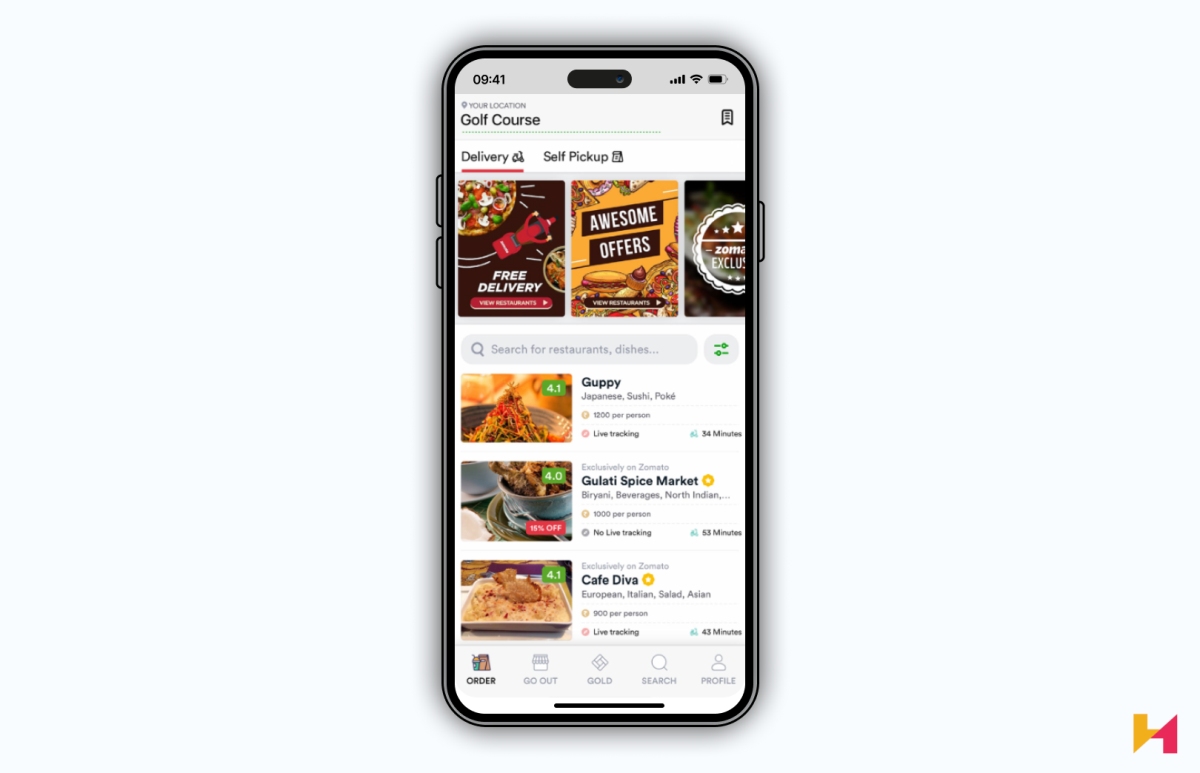
Zomato excels in providing a comprehensive list of restaurants, detailed menus, and user reviews. It’s a blend of convenience and culinary exploration.
#2 Parcel and package delivery apps
Parcel and package delivery apps have revolutionized how we send and receive packages, catering to both personal and business needs. Essential features include real-time tracking, flexible pickup and delivery options, easy scheduling, and secure handling.
Example: FedEx Mobile


FedEx Mobile app exemplifies this category with its robust tracking system, delivery customization options, and reliable service, making package sending and receiving more efficient and user-friendly.
#3 Grocery delivery apps
These apps simplify the chore of grocery shopping, allowing users to order groceries online and have them delivered to their doorstep. Important features include shopping lists, price comparisons, scheduled deliveries, and fresh produce guarantees.
Example: Instacart
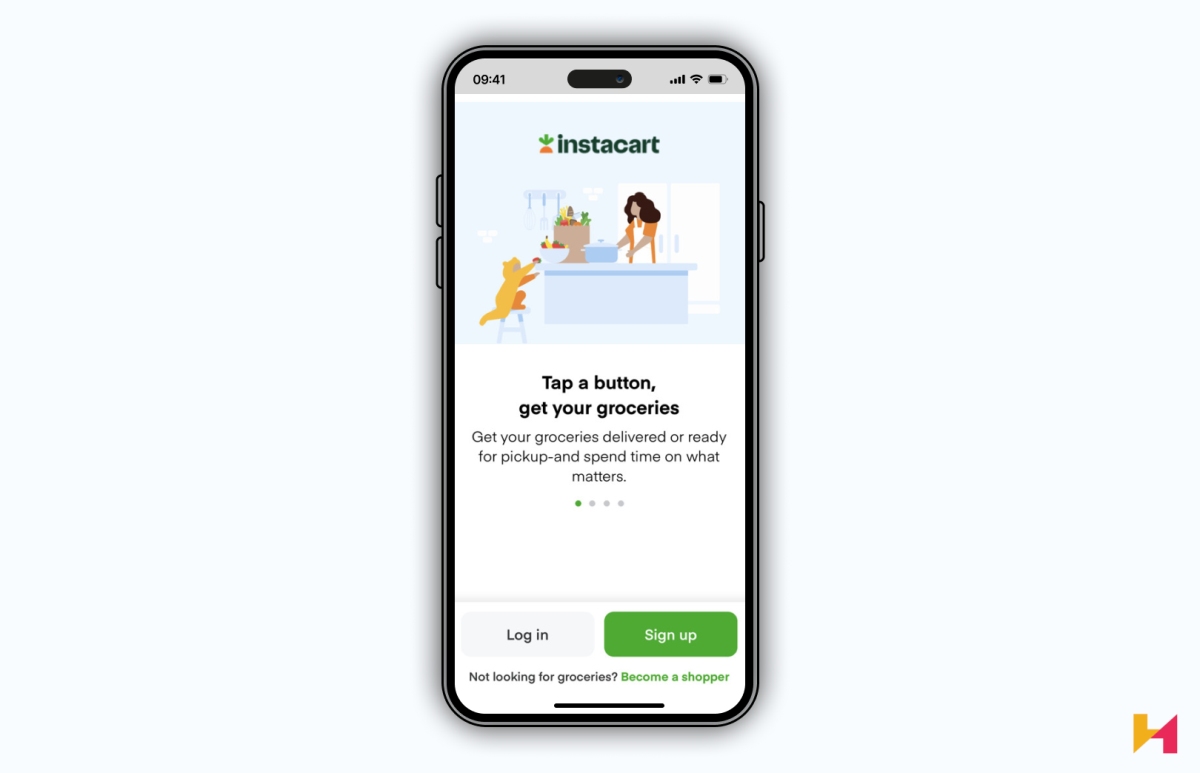

Instacart boasts delivery in as little as one hour. Available retailers vary depending on your location. If you prefer to skip the delivery fee, you can arrange delivery to a local store. However, the first delivery is always free.
#4 Home services apps
Home services apps connect users with professionals for home maintenance and repair services. They typically feature a variety of service categories, user ratings and reviews, transparent pricing, and scheduling options.
Example: TaskRabbit
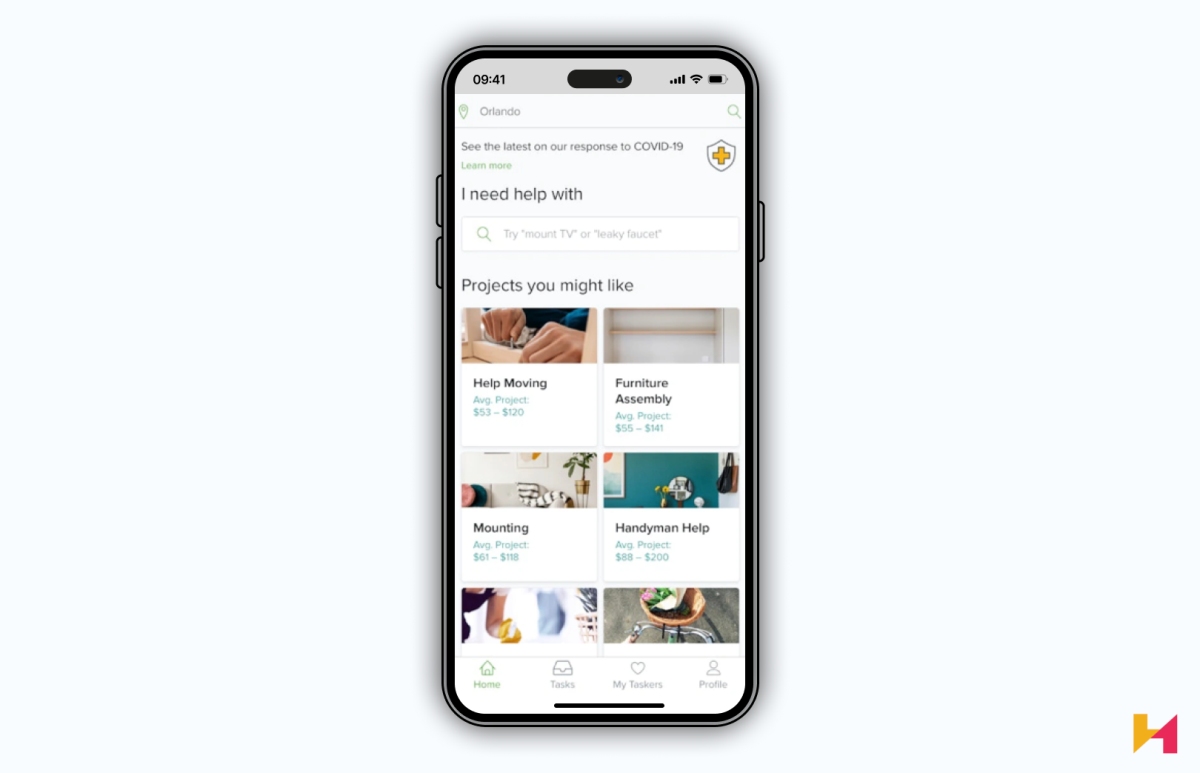

TaskRabbit offers an array of home services from furniture assembly to minor home repairs, with a focus on reliability and user-friendly scheduling.
#5 Transportation apps
These apps have transformed urban mobility, offering ridesharing, taxi-hailing, and car rental services. Essential features include real-time tracking, fare estimation, driver ratings, and multiple payment options.
Example: Uber
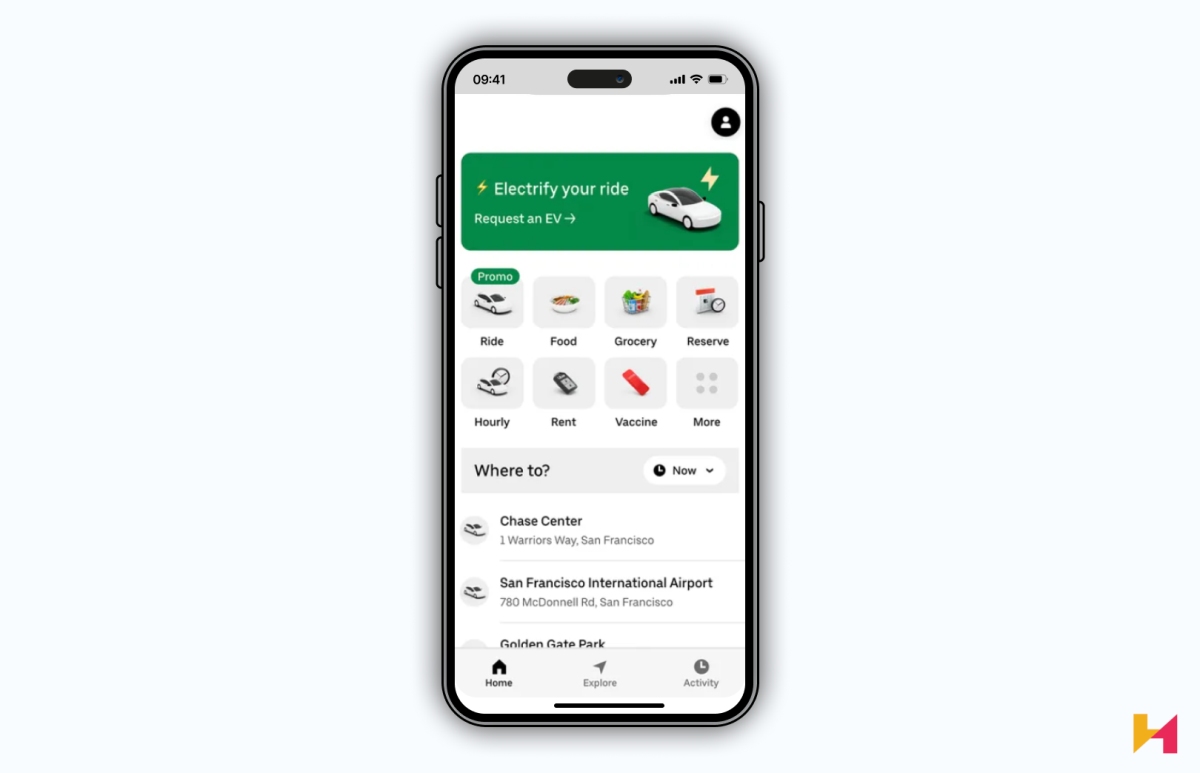

Uber is a prime example, providing reliable and convenient transportation options with dynamic pricing and driver feedback mechanisms.
#6 Medicine delivery apps
Medicine delivery apps are crucial for healthcare accessibility, allowing users to order prescription medicines and healthcare products online. They prioritize features like prescription uploads, privacy, timely delivery, and pharmaceutical consultation.
Example: Pharmacy2U


Pharmacy2U offers a seamless way to order and receive medications, focusing on user privacy and timely delivery.
#7 Alcohol and beverage delivery apps
These apps cater to delivering alcoholic beverages and require adherence to legal age limits and responsible service. Features often include age verification, variety in beverage selection, and compliance with local alcohol laws.
Example: Drizly
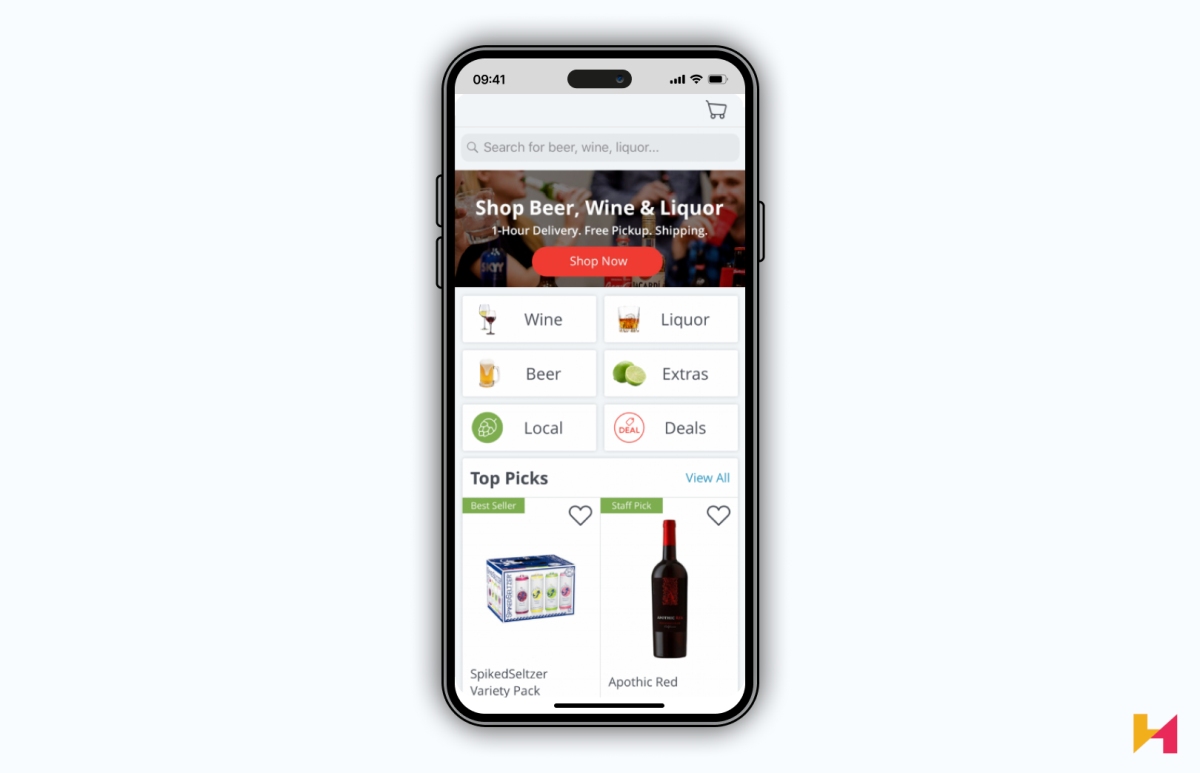

Drizly offers a wide range of alcoholic beverages with robust age verification processes, ensuring legal and responsible delivery.
Innovative technologies & features to implement in delivery apps
The landscape of delivery apps is rapidly evolving, thanks to a surge in innovative technologies and features that are reshaping user experiences and operational efficiencies. Here’s a look at some of the cutting-edge technologies and features you can consider integrating into your delivery app:
- Drone and autonomous vehicle delivery systems: Revolutionizing the speed and efficiency of deliveries, especially in congested urban areas, these technologies are a game-changer for delivery services. They offer a futuristic approach to ensuring fast and reliable deliveries.
- Real-time tracking and route optimization: This feature is essential for efficient deliveries, allowing delivery personnel to navigate the most efficient routes and providing customers with real-time updates on their order status.
- Contactless delivery and safety measures: In response to health concerns, such as those highlighted by the COVID-19 pandemic, contactless delivery options have become crucial. Integrating this feature can ensure the safety of both customers and delivery staff.
- Cloud kitchens and ghost restaurants: These are innovative business models where food is prepared solely for delivery, without a physical dine-in space. They allow for a wide range of culinary offerings and use data analytics to adapt their menus according to consumer preferences.
- Augmented Reality (AR) and Virtual Reality (VR): These technologies can enhance the user experience dramatically. AR can be used for menu visualization and food tracking, while VR can offer virtual dining experiences and immersive restaurant exploration.
- Social media integration and user engagement: By integrating social media platforms, delivery apps can offer seamless ordering experiences and leverage user-generated content to build trust and engage customers effectively.
- Personalization and customization: Tailoring food recommendations based on user preferences and dietary restrictions can significantly enhance customer satisfaction. This can be achieved through the integration of smart assistants and data analytics.
- Voice and chatbot assistants: Voice-enabled ordering and AI-powered chatbots can improve accessibility and convenience, making the app more user-friendly for a wider audience.
- Mobile payment solutions: Incorporating various mobile payment methods, including digital wallets and cryptocurrencies, can make transactions more secure and convenient for users.
- Robotics and automation in food preparation: Integrating robotics in the kitchen can enhance efficiency, reduce errors, and speed up the food preparation process, leading to faster order fulfillment and cost savings.
- Internet of Things (IoT) integration: IoT devices can be used in delivery vehicles to monitor food conditions during transit, ensuring food quality and safety.
- Environmental sustainability: Innovations aimed at reducing emissions and waste, such as electric delivery vehicles and eco-friendly packaging, are critical for the long-term sustainability of delivery services.
Delivery app development cost
Developing a delivery app is an investment that requires careful consideration and planning. The cost of creating such an app varies widely depending on numerous factors, from the complexity of the features to the choice of technology and the expertise of the development team. Understanding these factors is crucial for startups and businesses looking to venture into the delivery app market.
Let’s break down these cost factors to give you a clearer picture of what goes into the financial aspect of delivery app development, which will not only help in budgeting but also in making strategic decisions about the app’s features and functionalities.
# Cost range
The cost of developing a delivery app varies significantly based on several factors.
Generally, the development cost ranges from $20,000 to $50,000, but it can escalate to $600,000 to $1,000,000+ for highly customized or complex solutions.
This wide range is due to the diversity of features, complexity, and other variables inherent in mobile app development.
# Factors influencing the cost
Several critical factors influence the cost of developing a delivery app:
- Features: The complexity and richness of features in the app are primary cost determinants. Basic functionalities like user registration and order placement are foundational, while advanced features like real-time tracking and AI-driven recommendations can significantly increase the cost.
- Number of platforms: The choice of platform(s) – iOS, Android, or both – affects development costs. Developing for both platforms simultaneously typically incurs higher costs due to the need for additional resources and testing.
- Technology: The technology stack, including programming languages, frameworks, and tools, influences the development cost. Advanced technologies may demand higher expertise, leading to increased costs. Additionally, incorporating technologies like AR/VR, IoT, and blockchain can further elevate expenses.
- User Interface and User Experience design: Investing in a visually appealing and intuitive design is crucial but can increase costs. The design intricacy directly influences user reception and, consequently, the development expense.
- Integration with third-party services: Integrations such as payment gateways, map services, or other third-party APIs add to the complexity and cost of the app.
- Maintenance and updates: Ongoing maintenance, including regular updates, bug fixes, and feature enhancements, is an additional ongoing cost that needs consideration.
- Development team: The size, location, and expertise of the development team play a significant role in determining the cost. Teams located in regions with higher living costs generally charge more. Similarly, the experience level of the team is directly proportional to the development cost.
Conclusion
As we look to the future, the landscape of delivery app development is poised for even more exciting advancements. The integration of innovative technologies like AI and IoT and the emergence of VR startups promises to further revolutionize this space, enhancing both operational efficiencies and user experiences. For startups and businesses, staying abreast of these trends and adapting to the evolving digital marketplace will be key.
The potential for delivery apps to reshape consumer behavior and transform industries is immense. As we navigate this dynamic terrain, the opportunities for growth and innovation in the delivery app sector are boundless, setting the stage for a future where convenience, efficiency, and technology seamlessly converge.
